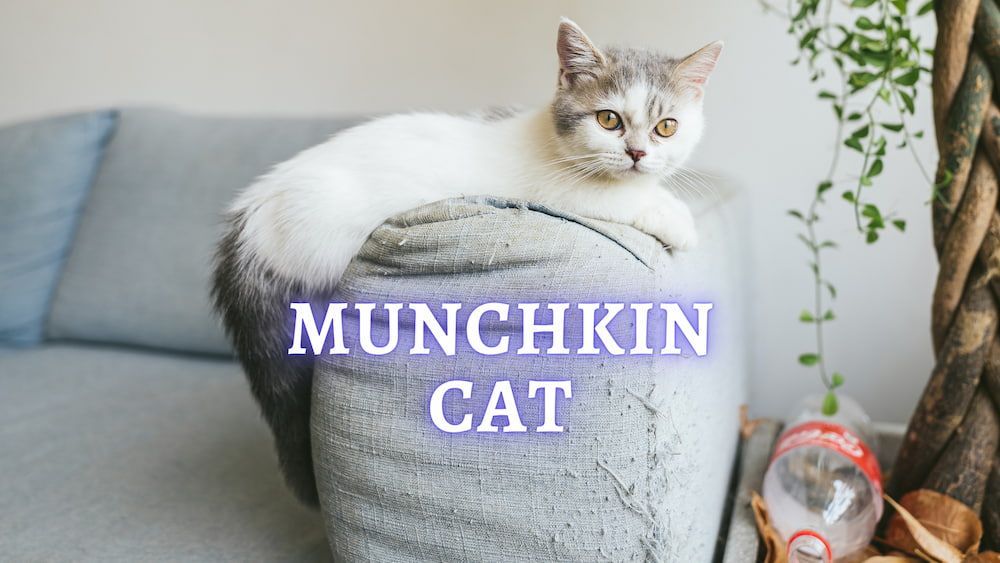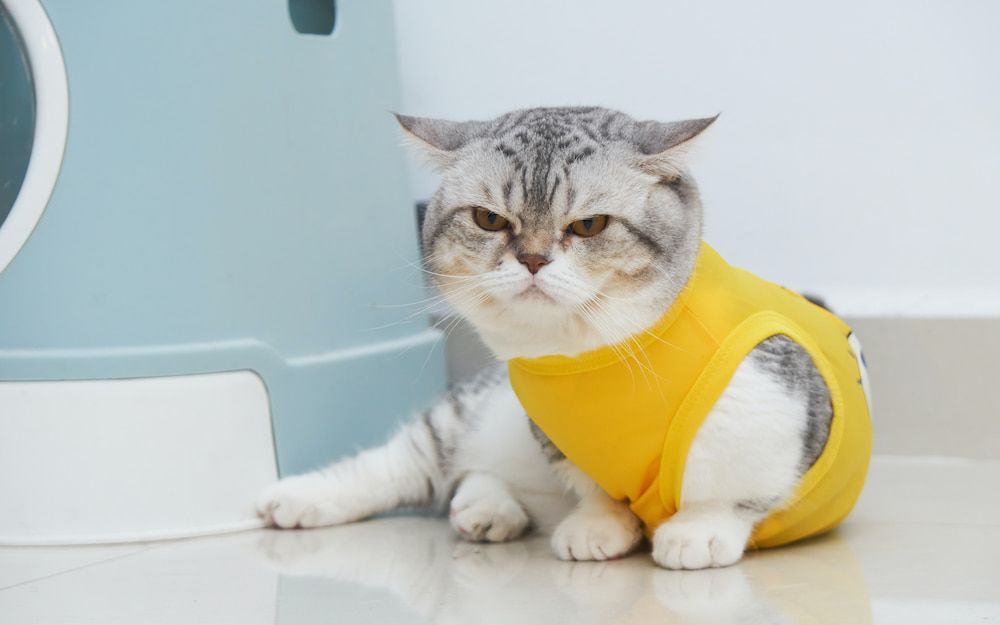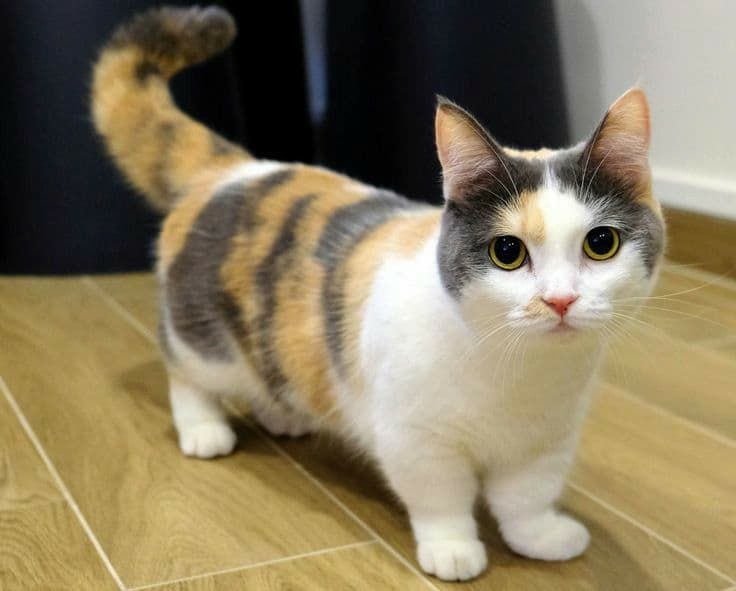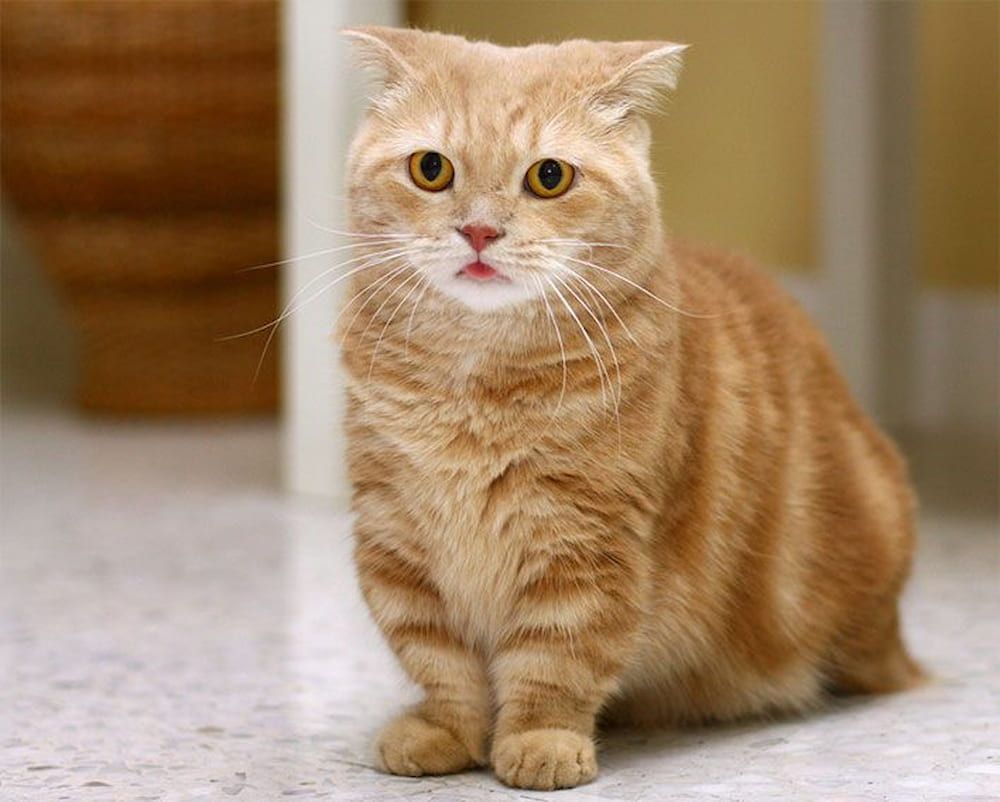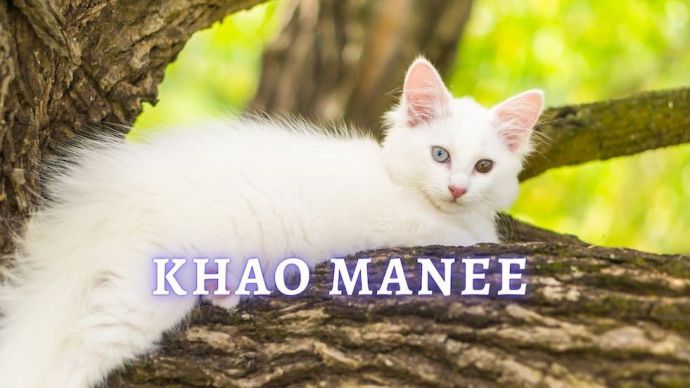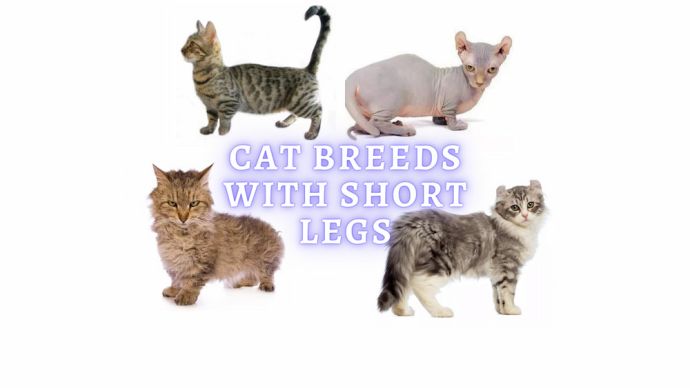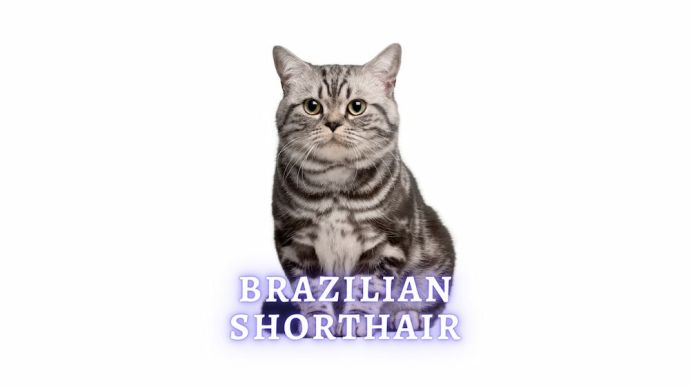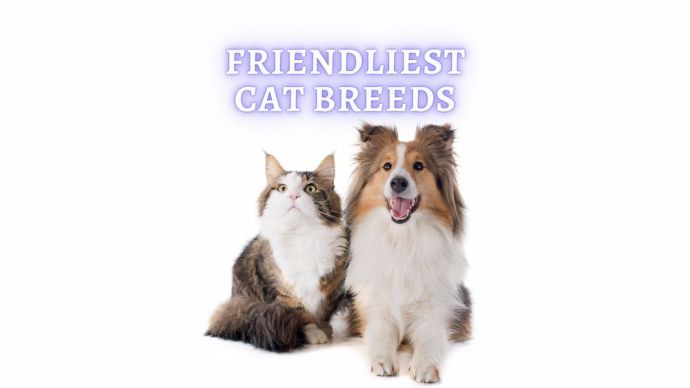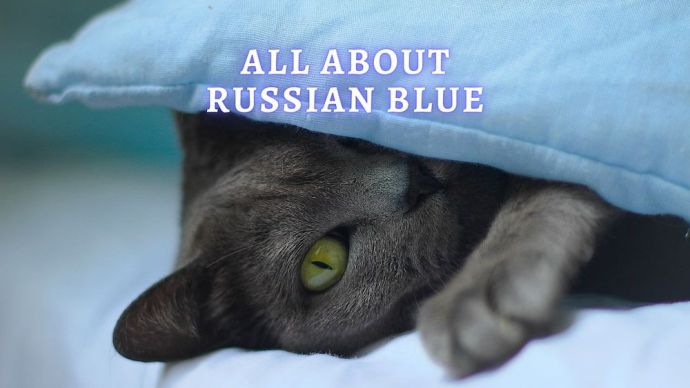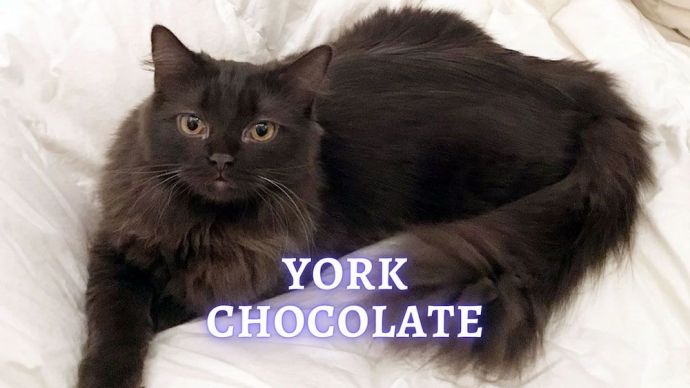Munchkin Cat: Appearance, Lifespan, Cost
Written by:
Author: Vicki Smirnova
Vicki Smirnova is a professional writer and editor who adores animals and helps readers get along well with their pets. She has been working in digital media for more than 5 years and has great experience writing content about lifestyle, including pets. Vicki specializes in dog health and nutrition, cat feeding, dog training. She is an aquarium lover and is passionate to write about fish care at home. Also, Vicki headed several websites and worked as a news editor.
View all 245 articlesLearn about our editorial process and veterinary review board.
Viewed: 114
Updated on: 08/16/2022
The Munchkin is a medium-sized breed with short legs and a long spine. These features have developed as a result of a natural mutation, so the animals are healthy. Munchkins are mobile, get along well with other pets and are kind to children. Munchkins have a dense body with a rounded chest. They come in both short and long-haired varieties, with soft, plush coats. Long-haired Munchkins have a tufted tail. Munchkins can be of any color and spotting pattern and may also have different eye colors. With professional care, they can live up to 16-20 years.
Characteristics
| Weight | Up to 9 pounds |
| Height | 7 to 9 inches and up to 18 inches long |
| Colors and Patterns | Any color of the feline rainbow |
| Lifespan | 16-20 years |
| Suitable for | Someone who wants a playful cat |
Munchkin Cats History
In the 30s of the ХХ century, references to unusual, short-legged cats periodically appeared in Europe. The outbreak of World War II almost completely erased this genetic line. In 1944, a British veterinarian observed several generations of cats with unique limb parameters.
The modern development of the Munchkin breed occurred in 1983, when teacher Sandra Hochenedel, from Louisiana, returning home, noticed an unusual pregnant cat. The woman took pity, sheltered her and named her Blackberry. Half of the born kittens also had short legs, which surprised Sandra. She decided to give an unusual pet to her friend, Kay LaFrance.
Sandra and Kay managed to interest Dr. Solveig Pfluger, who served as a TICA association judge in the Munchkins. He examined these unusual cats and issued an unequivocal verdict – the breed appeared naturally, thanks to changes in the recessive gene that regulate the length of the paws. Unlike dachshunds and other short animals, the Munchkin’s short legs do not usually lead to back problems.
The breed was first introduced to the general public at the TICA national show, held at Madison Square Garden in 1991. Most of the audience and experts were critical of the vitality of the Munchkin, stigmatizing them as living evidence of a violation of breeders’ ethics. Despite lengthy disputes, by 1994, TICA still listed the breed as developing. In the early 2000s, the Munchkins won the championship title and gained real popularity.
The breed is recognized by the associations TICA, AACE, UFO, SACC and WNCA. The FIF, CFA and the Governing Council of the Cat Fancy refused to register the Munchkins, considering these cats to be genetically inferior. TICA decided the issue democratically – only cats whose owners are able to confirm a monopedigree in three or more generations were allowed to participate in the show. Munchkins got their unusual name in honor of the cheerful, friendly people from the book, The Wonderful Wizard of Oz.
Interesting Facts about the Munchkin Breed
- Easily get along in a large family, with other pets and children;
- Undemanding in care;
- Prone to lordosis and obesity, Munchkins should carefully follow a feeding regime.
Temperament and Personality
Appearance
Munchkins cannot be mistaken for other cats due to their unique, short legs. With an average body size, the legs of these cats are 2-3 times smaller than those of other breeds. Despite this mutation, Munchkins have retained a healthy spine, so they have a mobile, flexible, strong body.
Munchkins are often crossed with other breeds, so they can differ in appearance and character. Offspring are often long-legged. Such cats do not participate in cat shows, but can be used for the development of the breed, since the presence of two short-legged parents increases the mortality of kittens in the litter. Breeders are actively developing Munchkins, so the associations have not yet provided rigid standards.
The Munchkin’s head is proportional to the size of its body, has rounded contours and the shape of a modified wedge. The cheekbones are high and usually more pronounced in cats. The muzzle is of medium length and the transition of the nose to the forehead is smooth.
Munchkins’ eyes are almond-shaped, medium or large in size. The muzzle’s fairly wide landing at a slight angle provides the Munchkin an open expression. Munchkins do not have a strict relationship between eye color and coat color.
The ears are wide at the base and rounded at the tips. Ears can be medium or large in size, set wide and high.
The Munchkin’s body is extended. The back has a slight slope down from the tail to the shoulders. The thighs are firm and the chest is rounded. The skeleton is of medium size and the muscles are well developed.
The limbs are short and located at the same distance in the direction of view from head to tail. The upper and lower parts of the forelegs and the thighs and lower parts of the hindlegs are equal in length. The hindlimbs are often slightly longer than the forelimbs.
The length of the tail and body is usually the same. The tail is of medium thickness with a rounded, somewhat narrowed tip. During movement, the tail comes to a vertical position.
The coat is silky, semi-long, or velvety short, with a medium undercoat. Munchkins can have any coat color, and bicolor individuals are often found.
Personality
Munchkins are good-natured cats. Animals of this breed love outdoor games and its short paws do not prevent it from being nimble. They very deftly jump on low tables, chairs and other furniture. These are smart, very friendly, clean animals and quickly get used to a new environment and new people. They remain playful throughout their lives and are especially fond of children.
Munchkins are extremely inquisitive and are distinguished by truly canine devotion to their owners. These cats easily endure trips and do not resist walks on a harness. An interesting feature of the breed is the ability to sit on its hind legs for a long time, surveying its surroundings. At the same time, the front paws hang funnily along the body, which is why Munchkins are often called “cat-kangaroos.”
| Adaptability | |
| Adapts to Apartment Living | 5 |
| Tolerates Being Alone | 3 |
| Tolerates Cold Weather | 4 |
| Tolerates Hot Weather | 3 |
| All Around Friendliness | |
| Affectionate with Family | 5 |
| Kid Friendly | 4 |
| Dog Friendly | 5 |
| Cat Friendly | 5 |
| Health Grooming | |
| Amount of Shedding | 3 |
| Easy to Groom | 3 |
| General Health | 4 |
| Activity | |
| Energy Level | 4 |
| Intensity | 4 |
| Exercise Needs | 4 |
READ MORE: Friendliest Cat Breeds
Short Legged Cats Activity
Munchkins are very smart, so they can be easily trained to a litter box or harness. You can teach your cat to stand up on its hind legs at your request: clearly pronounce the command and give it a tasty treat for a successfully completed task. Many breeders recommend developing a kitten’s intelligence with the help of special toys or outdoor games, where the pet could show its resourcefulness. Never scold or punish a cat; otherwise, it may lose their confidence in you.
Health & Care
This breed is easy to keep and does not require special care. Experts recommend following a few simple rules.
Despite the gregarious nature of Munchkins, they are very fond of “twisting nests” to feel protected while relaxing. Set up a Munchkin basket, small, sturdy box or another soft-lined house. Get a deep tray because clean pets actively bury waste and are able to litter around. About once a month, ears should be cleaned very carefully and not deeply. Using special toothpaste once a month, you can successfully prevent the development of oral diseases in Munchkins.
Short-haired Munchkins need to be combed once a week; long-haired, 2 times. The main thing is to prevent the occurrence of tangles. It is enough to bathe these cats once every 3-4 months with special shampoos. Sharpening claws is usually easy for Munchkins, especially if there is a scratching post in the house. Once every 2-3 weeks, it is worth checking the condition of the paws to help the pet (if necessary).
It is undesirable to let cats go for a walk on their own, as a squat animal often looks like it is preparing to attack, which can be misunderstood by other pets or people. Due to its short legs, the Munchkin can be injured.
Munchkins should be fed moderately because, despite their high mobility, they are prone to obesity. Provide frequent replacement of drinking water. To ensure good nutrition, use specialized or separately prepared natural food. Experts advise a diet of:
- 60% – raw or boiled meat (rabbit, beef, offal);
- 30% – boiled or raw vegetables;
- 10% – cereals.
Munchkins should not be treated with salty, sweet, fried or smoked food; also bad are bean dishes, fish and fatty meats (lamb, pork). An adult cat can be fed a couple of times a day; kittens up to 6 times a day.
Owners of cats of this breed should be aware that such pets are somewhat intolerant of plant foods, so its share in the diet should be small.
Munchkins domestic cats can suffer from lordosis, a disease in which the muscles that support the spinal column are weakened. [2] It moves into the chest cavity while pressing on the heart and lungs. A slight curvature will not cause problems but can be aggravated by trauma and obesity. Severe lordosis causes breathing difficulties and increases the heart muscle load, leading to illness. However, lordosis is a fairly rare disease (and other breeds of cats can also suffer from it).
Since the Munchkin’s short legs are a natural genetic mutation, some kittens’ legs may be short, while others may be regular or long. If the embryo inherits the gene responsible for short limbs from both parents, it can be fatal. [3]
READ MORE: The 15 Best Wet Cat Food (Vet Approved Review)
Breeders of short legged cat
The rules for selecting Munchkin kittens are standard: take babies from the age of 12 weeks with the necessary vaccinations. Contact only reliable catteries offering registered animals. This will allow you to get a really healthy kitten without serious birth defects. Munchkins have won the love of a wide audience, so expect to queue up for one. If you do not care about a certain gender, color type, or coat length, you can get a kitten quickly enough. Tempted by a low price, you should not buy Munchkins in bird markets or through private listings, as this can result in the long-term treatment of the animal or the acquisition of a non-viable cat.
The American Cat Fanciers Association (ACFA) and the Cat Fanciers Association (CFA) still refuse to recognize the Munchkin breed. Due to his doubts about the ethics of intentionally breeding Munchkin cats with genetic mutations, one TICA judge resigned.
Adoption from an Animal Rescue or a Shelter
To adopt one, contact a company that specializes in saving Munchkins. You can start your breed search at adoptapet.com.[1] A site search will show you available munchkins in your area.
RELATED: Adopting an Adult Cat: What Should I Know (Veterinary Advice)
Pros & Cons
Pros
Cons
- Sociable, playful and loving breed.
- Cannot jump on high surfaces.
- Friendly to other pets.
- Perpetuating this breed causes a lot of controversies.
- Needs help with care.
- Less mobile due to physical features.
FAQ
Is it cruel to have a Munchkin?
This particular type of cat appeared in the 1980s. Since then, breeders have been selling these interesting kittens to owners looking for a unique pet. However, some veterinarians argue that propagating this breed is unethical and cruel and people should stop buying them.
Do Munchkins make good pets?
The appearance of the short legged cat reflects their docile nature: they are smart, active, sociable cats. Munchkins love human attention and take part in games with pleasure. They can be trained to fetch items and follow commands. Although these felines can jump quite high, many of them prefer to find another, easier way to get to the top. These cats can run relatively fast despite their short legs.
How much do Munchkins usually cost?
The average price of a Munchkin is in the range of $500-1500. However, show animals can cost $2,000 or more. You can also find a munchkin for $100 or less. It all depends on the breeder.
Why shouldn’t you buy a Munchkin?
A Munchkin is not recommended for purchase due to the many questions and problems that the owner of such a cat may face. They may face serious health problems.
Article Sources:
- “Adopt a Dog or Cat Today! Search for Local Pets in Need of a Home.” Adopt a Pet, adoptapet.com.
- “Munchkin Cat Health Problems.” VetInfo, vetinfo.com/munchkin-cat-health-problems.html.
- “Munchkin – Limb Deformity.” Universities Federation for Animal Welfare, ufaw.org.uk/cats/munchkin-limb-deformity.
 Cat Care Why Does My Cat Attack My Legs? 10 Reasons Why and What To Do About It (Vet-Approved Advice)
Cat Care Why Does My Cat Attack My Legs? 10 Reasons Why and What To Do About It (Vet-Approved Advice) - 45076
- 21
 Cat Veterinary Tips Cat Stomach Gurgling: Vet Advice on Why is Your Cat Stomach Gurgling?
Cat Veterinary Tips Cat Stomach Gurgling: Vet Advice on Why is Your Cat Stomach Gurgling? - 33727
- 4
 Cat Veterinary Tips My Cat Lost its Voice: Can Cats get Laryngitis? (Vet Advice)
Cat Veterinary Tips My Cat Lost its Voice: Can Cats get Laryngitis? (Vet Advice) - 22889
- 13









